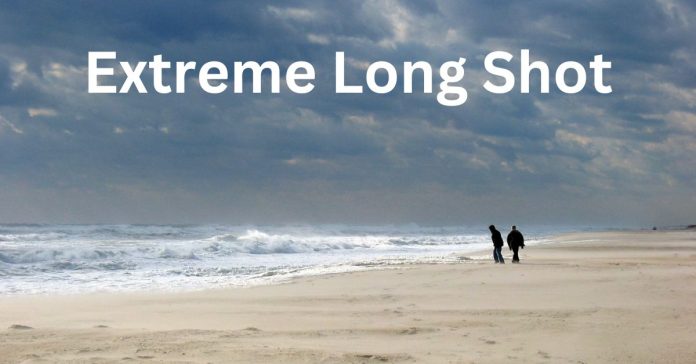In the world of cinematography, every shot serves a purpose. From capturing intimate moments to establishing sweeping landscapes, each frame contributes to the overall narrative and visual experience. Among the diverse array of shot types, the extreme long shot stands out for its ability to set the stage, evoke emotion, and immerse viewers in expansive worlds. In this blog post, we delve into the artistry and significance of the extreme long shot, exploring its uses, effects, and the creative possibilities it offers to filmmakers.
Power of the Extreme Long Shot:
Setting the Scene:
The extreme long shot, also known as the establishing shot, is the filmmaker’s canvas for painting the broader context of the narrative. By capturing vast landscapes, cityscapes, or architectural marvels, this shot type provides viewers with a sense of place and scale.
Whether showcasing the sprawling expanse of a desert, the towering skyscrapers of a city, or the tranquil beauty of the countryside, the extreme long shot invites audiences to step into the world of the film and immerse themselves in its visual splendor.
Creating Atmosphere and Tone:
Beyond mere geography, the extreme long shot plays a crucial role in establishing the atmosphere and tone of a scene or film. The choice of location, lighting, and composition can evoke a wide range of emotions, from awe and wonder to isolation and foreboding.
For example, a sun-drenched vista may convey a sense of optimism and freedom, while a desolate landscape shrouded in mist may evoke feelings of mystery and unease. By carefully crafting the visual elements within the frame, filmmakers can manipulate audience perceptions and set the stage for the unfolding story.
Emphasizing Scale and Significance:
One of the most striking aspects of the extreme long shot is its ability to convey the scale and significance of the subject within the larger context of the narrative. By placing characters, objects, or landmarks against expansive backdrops, filmmakers can highlight their relative size, importance, or insignificance.
For instance, a lone figure traversing a vast desert landscape may appear small and vulnerable, underscoring the challenges they face or the magnitude of their journey. Similarly, a towering monument looming in the distance may symbolize power, authority, or historical significance, commanding attention and reverence.
Establishing Continuity and Spatial Relationships:
In addition to its aesthetic and emotional impact, the extreme long shot serves a practical function in maintaining continuity and establishing spatial relationships within the film’s universe.
By providing viewers with a bird’s-eye view of the setting, filmmakers can orient them to the layout of key locations, transitions between scenes, or the passage of time. This spatial context helps to ground the narrative, guiding viewers through the story while maintaining a sense of coherence and believability.
Unlocking Creative Possibilities:
While the extreme long shot is often associated with grand vistas and panoramic views, its creative potential extends far beyond traditional landscapes. Filmmakers can experiment with unconventional compositions, perspectives, and visual effects to imbue their shots with depth, dynamism, and narrative resonance.
Whether capturing the vastness of outer space, the intricate details of a bustling cityscape, or the eerie beauty of a fog-shrouded forest, the extreme long shot offers endless opportunities for artistic expression and storytelling innovation.
Memorable Examples in Cinema:
Numerous iconic films have featured memorable extreme long shots that have left a lasting impression on audiences. One such example is the opening sequence of “Lawrence of Arabia” (1962), directed by David Lean. The film begins with an expansive desert landscape stretching to the horizon, as the tiny figure of T.E. Lawrence rides towards the camera on his camel. This shot not only establishes the setting of the film but also foreshadows Lawrence’s epic journey and the vastness of the challenges he will face.
Another notable example can be found in “The Shining” (1980), directed by Stanley Kubrick. In the film’s opening sequence, an aerial shot of the winding mountain roads leading to the Overlook Hotel sets the stage for the isolation and foreboding atmosphere that permeates the story. The vast expanse of the mountains and forests surrounding the hotel creates a sense of unease and disorientation, foreshadowing the psychological horror that unfolds within its walls.
Conclusion:
In conclusion, extreme long shots are a powerful cinematic tool that serves as more than just a visual spectacle. They play a crucial role in establishing the setting, conveying thematic elements, and immersing viewers in the world of the film. Through careful composition, technical expertise, and narrative significance, these shots leave a lasting impact on audiences and contribute to the overall cinematic experience. As filmmakers continue to push the boundaries of visual storytelling, extreme long shots will undoubtedly remain a cornerstone of cinematic artistry.
Must Read: Mastering Cinematography Techniques: A Comprehensive Guide to Visual Storytelling




